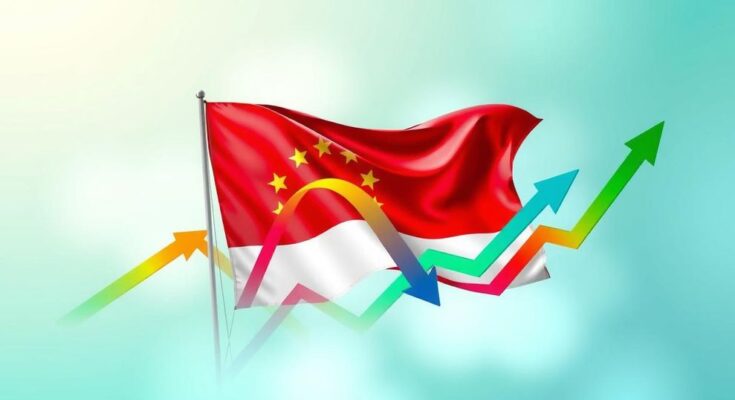The Chilean peso is appreciating due to a drop in inflation and expectations for stable interest rates from the Central Bank. Despite a concerning trade deficit and structural challenges linked to commodity dependence, a modest rebound in domestic demand offers some optimism. External factors, particularly the U.S. economic situation, continue to impact exchange rate dynamics, with potential for volatility ahead.
The Chilean peso has appreciated amidst a backdrop of mixed domestic and external economic signals. A notable decrease in the Consumer Price Index (CPI) of 0.4% in February has lowered annual inflation to 4.7%, thus offering some respite to the Central Bank of Chile. Nonetheless, ongoing inflationary pressures in critical sectors, particularly transportation and housing, demand continued vigilance.
Market speculations regarding the Central Bank’s forthcoming decisions are crucial to the peso’s stability. Current forecasts indicate that the institution is likely to maintain steady interest rates, which provides a supportive environment for the peso against the U.S. dollar. Despite this, significant structural challenges remain, rooted in Chile’s historical reliance on commodity exports, especially copper.
The trade deficit of USD 266.65 million recorded at the conclusion of February raises concerns despite an initial surplus at the start of the year. The decline in copper exports underscores Chile’s susceptibility to fluctuations in global trade. However, an uptick in imports reflects a slight recovery in domestic demand, instilling some optimism regarding the internal economic landscape.
Externally, the economic conditions in the United States significantly impact the Chilean peso’s exchange rate dynamics. February’s non-farm payroll report indicated job growth below expectations, with employment rising by 151,000 instead of the anticipated 160,000, alongside an increase in the unemployment rate to 4.1%. These developments have stoked expectations of a more accommodative U.S. monetary policy.
Should U.S. Federal Reserve Chair Jerome Powell indicate a willingness to adopt a more flexible monetary approach, the U.S. dollar might weaken, further aiding the Chilean peso. However, a more aggressive policy stance would likely fortify the U.S. dollar, exerting additional pressure on the recovery of the Chilean peso. Thus, while the domestic economic outlook shows encouraging signs, volatility in trade and international uncertainties will be crucial factors to observe in the coming weeks.
In summary, the Chilean peso’s recent appreciation is influenced by favorable inflation trends, expectations surrounding monetary policy, and a gradual recovery in domestic demand. However, structural vulnerabilities, particularly concerning commodities, and influential external factors remain critical issues. Monitoring these dynamics will be essential for understanding the peso’s trajectory moving forward.
Original Source: londonlovesbusiness.com




